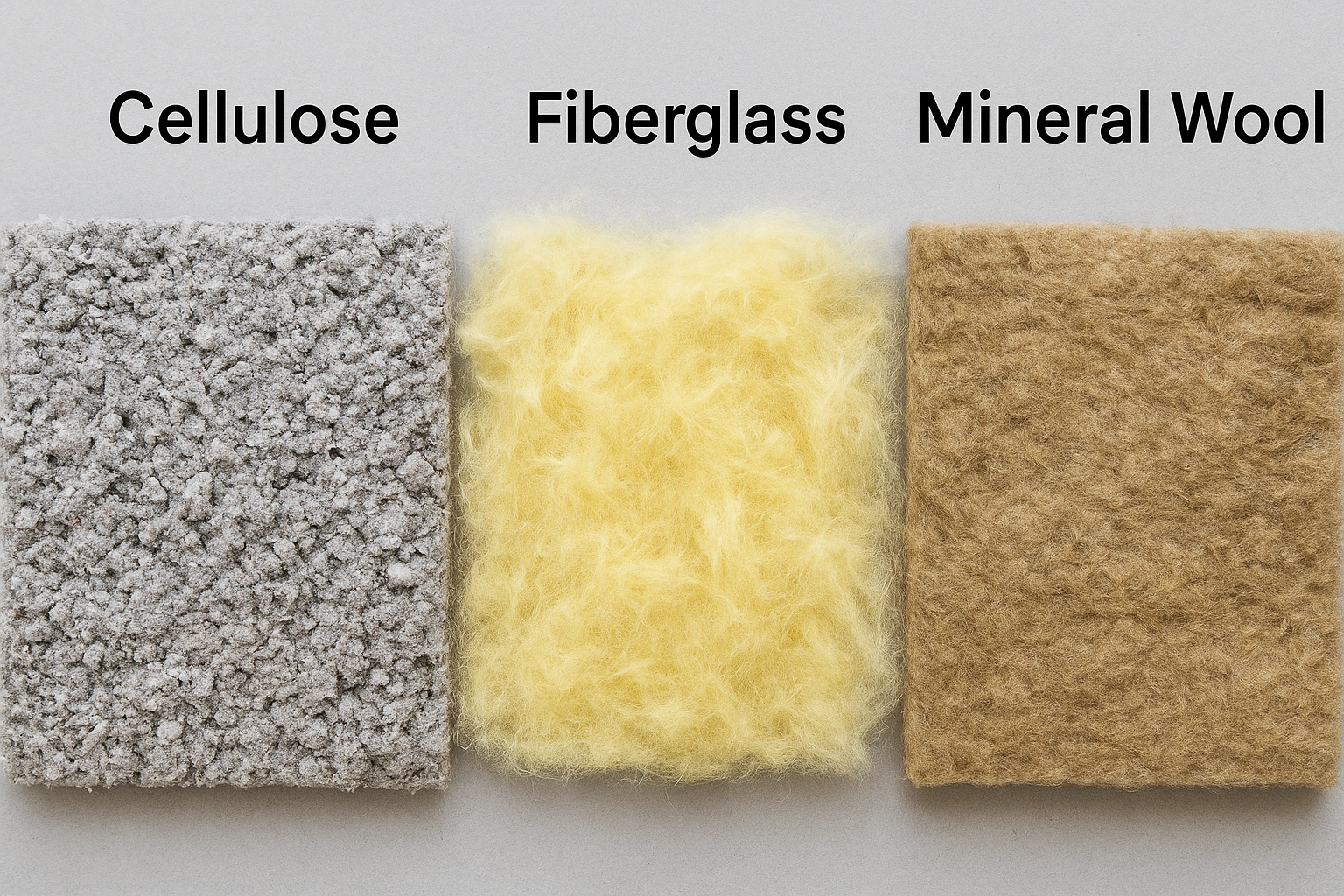Cellulose, Fiberglass, and Mineral Wool Insulation: A Complete Guide
Choosing the right insulation for a home is one of the most important steps during construction or renovation. The decision affects comfort, energy efficiency, structural durability, and even fire safety. Among the most common options are cellulose insulation, fiberglass, and mineral wool. Each material has its own features, strengths, and limitations.
In this article, we will review them in detail: thermal efficiency, moisture resistance, fire protection, eco-friendliness, soundproofing, installation process, and overall cost-effectiveness.
1. Thermal Efficiency
- Cellulose provides an R-value of about 3.6–3.8 per inch. Its dense structure reduces air movement and minimizes heat loss. Homes insulated with cellulose retain air better and reduce drafts significantly.
- Fiberglass offers an R-value of 2.2–3.8 per inch, depending on density and form (batts, rolls, or loose-fill). It is widely used due to affordability and consistent performance.
- Mineral wool delivers up to 20–35% higher performance than fiberglass, meaning thinner layers can achieve the same thermal resistance.
2. Environmental Impact
- Cellulose contains up to 80–85% recycled paper and cardboard, making it one of the most eco-friendly insulation materials.
- Fiberglass often includes recycled glass (up to 50%), but production requires more energy compared to cellulose.
- Mineral wool typically uses 60–70% recycled content, such as industrial slag or basalt. It does not biodegrade but can last decades without replacement.
3. Moisture Resistance
- Mineral wool is hydrophobic and does not absorb water. It resists mold and mildew growth.
- Fiberglass is moisture-resistant but can lose efficiency if condensation accumulates inside. Improper installation may increase the risk of mold.
- Cellulose is more prone to absorbing moisture, but special additives reduce mold risk. Proper vapor barriers are required for best performance.
4. Fire Safety
- Mineral wool withstands temperatures above 1,000 °C (1,800 °F), making it the top choice for fire protection.
- Fiberglass is naturally non-combustible, but its facings (paper, foil) may ignite.
- Cellulose is treated with fire retardants, making it flame-resistant and slowing fire spread.
5. Soundproofing
- Mineral wool offers superior sound absorption due to its high density. It is widely used in apartments, studios, and offices.
- Cellulose also performs well, filling cavities tightly and reducing vibration and sound transfer.
- Fiberglass provides moderate acoustic performance, less effective than mineral wool.
6. Installation & Durability
- Fiberglass is lightweight, flexible, and easy to install, making it a common choice for DIY projects.
- Mineral wool is denser and heavier, requiring precise cutting. However, it keeps its shape and does not sag over time.
- Cellulose is usually installed with blowing machines. This ensures full coverage but requires professional equipment.
7. Health & Safety
- Fiberglass fibers can irritate skin, eyes, and lungs, so protective gear is essential.
- Mineral wool can also irritate on contact but is safe when installed properly with protective equipment.
- Cellulose generates dust during installation and requires masks and goggles for safe handling.
8. Cost & Value
- Fiberglass is the most affordable option, typically $0.30–$1.50 per square foot.
- Cellulose costs slightly more, especially with professional installation, but offers long-term energy savings.
- Mineral wool is the most expensive—about 30–50% higher than fiberglass—yet provides excellent durability, soundproofing, and fire resistance.
9. Comparison Table
| Feature | Cellulose | Fiberglass | Mineral Wool |
|---|---|---|---|
| R-value per inch | 3.6–3.8 | 2.2–3.8 | 20–35% higher |
| Eco-friendliness | Very high | Moderate | High |
| Moisture resistance | Low, needs protection | Moderate | Excellent |
| Fire resistance | Flame-retardant | Non-combustible | Superior |
| Soundproofing | Good | Moderate | Excellent |
| Installation | Blown-in, dusty | Easy, DIY-friendly | Heavier, precise cuts |
| Durability | May settle | Can sag | Holds shape decades |
| Cost | Medium | Low | High |
Conclusion
- Choose cellulose insulation if eco-friendliness, energy savings, and noise reduction are priorities, and professional installation is accessible.
- Opt for fiberglass if you’re on a budget or prefer a DIY-friendly solution.
- Select mineral wool insulation if maximum fire resistance, moisture protection, and durability are the most important factors.
Each option can provide excellent comfort and lower energy costs if properly chosen and installed.
